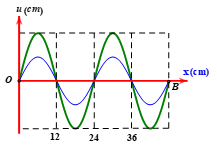Read the following passage and mark the letter A, B, C, or D on your answer sheet to indicate the correct answer to each of the questions:
The changing profile of a city in the United States is apparent in the shifting definitions used by the United States Bureau of the Census. In 1870 the census officially distinguished the nation’s “urban” from its “rural” population for the first time. “Urban population” was defined as persons living in towns of 8,000 inhabitants or more. But after 1900 it meant persons living in incorporated places having 2,500 or more inhabitants.
Then, in 1950 the Census Bureau radically changed its definition of urban to take account of the new vagueness of city boundaries. In addition to persons living in incorporated units of 2,500 or more, the census now included those who lived in unincorporated units of that size, and also all persons living in the densely settled urban fringe, including both incorporated and unincorporated areas located around cities of 50,000 inhabitants or more. Each such unit, conceived as an integrated economic and social unit with a large population nucleus, was named a Standard Metropolitan Statistical Area (SMSA).
Each SMSA would contain at least (a) one central city with 50,000 inhabitants or more or (b) two cities having shared boundaries and constituting, for general economic and social purposes, a single community with a combined population of at least 50,000, the smaller of which must have a population of at least 15,000. Such an area would include the county in which the central city was located, and adjacent counties that were found to be metropolitan in character and economically and socially integrated with the county of the central city.By 1970, about two-thirds of the population of the United States was living in these urbanized areas, and of that figure more than half were living outside the central cities.
While the Census Bureau and the United States government used the term SMSA (by 1969 there were 233 of them), social scientists were also using new terms to describe the elusive, vaguely defined areas reaching out from what used to be simple “towns” and “cities”. A host of terms came into use: “metropolitan regions”, “poly-nucleated population groups”, “conurbations”, “metropolitan clusters”, “megalopolises” and so on.
Question 32: Prior to 1900, how many inhabitants would a town have to have before being defined as urban?
A: 2,500
B: 8,000
C: 15,000
D: 50,000
Đáp án B
Đây là dạng câu hỏi về thông tin chi tiết có trong bài.
Theo thông tin xuất hiện ở cuối đoạn 1 “Urban population was defined as persons living in towns of 8,000 inhabitants or more. But after 1900 it meant persons living in incorporated places having 2,500 or more inhabitants.”
Dịch: Dân số thành thị được định nghĩa là những người sống ở thị trấn có số dân là 8.000 hoặc hơn. Nhưng sau năm 1900, điều đó có nghĩa là người dân sống ở những nơi sát nhập với nhau có số dân là 2.500 hoặc hơn.
Trước năm 1900 một thị trấn sẽ phải có 8.000 dân thì được định nghĩa là thành thị

 xác định. Gọi M, N và P là là ba điểm trên dây có vị trí cân bằng cách B lần lượt là 4 cm, 6 cm và 38 cm. Hình vẽ mô tả hình dạng của sợi dây ở thời điểm t1 (nét đứt) và thời điểm
xác định. Gọi M, N và P là là ba điểm trên dây có vị trí cân bằng cách B lần lượt là 4 cm, 6 cm và 38 cm. Hình vẽ mô tả hình dạng của sợi dây ở thời điểm t1 (nét đứt) và thời điểm  (với b, c là các số nguyên dương và
(với b, c là các số nguyên dương và 
 . Tính
. Tính